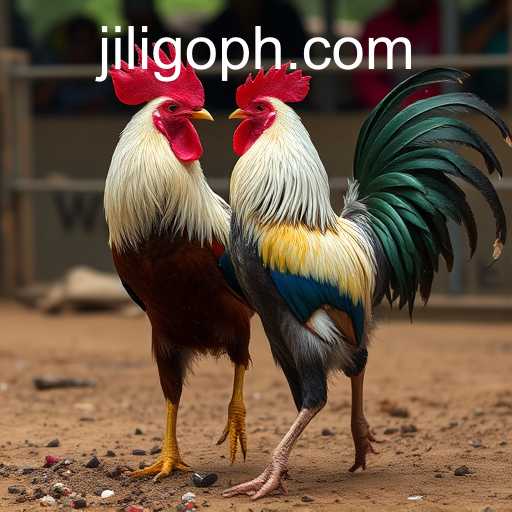Cockfighting: A Cultural Phenomenon
Cockfighting, known by different names around the world, is a blood sport that has endured through the ages despite its controversial nature. Many regions have variably embraced or condemned this traditional practice, which pits two gamecocks against each other in a ring or a similar confined space. This event, often regarded as a test of courage and strength, goes beyond mere entertainment for its participants. It is laden with cultural significance and, in some societies, deep social meaning.jili7
The Mechanics of Cockfighting
At the heart of cockfighting are the birds themselves, specifically bred for aggression and physical prowess. The presentation of the cocks, often adorned with special spurs, is a showcase of breeders' dedication to producing the most formidable competitor. Spectators gather in large numbers, placing bets on the outcome, cheering for their chosen fighters, and engaging in spirited debates over tactics and odds. It's a scene of high tension, drama, and passionate involvement.
The Tradition and Its Roots
The tradition of cockfighting can be traced back to ancient times, with records suggesting its widespread practice in regions such as Southeast Asia, South America, the Caribbean, and beyond. In certain cultures, cockfighting is viewed as a rite of passage, an event marked on the calendar to bring communities together. It is also central to festivities, agricultural fairs, and sometimes religious events, symbolizing valor and resilience.magicjili
The Significance of 'Jiligo'
Within this complex cultural milieu, the term 'jiligo' holds particular importance. While the exact definition may vary, it generally refers to a specially trained bird or a specific style of training associated with enhancing a rooster's capacities. Jiligo might involve particular diets, exercise regimens, or even mental conditioning techniques that set these birds apart as exceptionally skilled fighters.
Often discussed in whispers and among closed groups, the methodology behind 'jiligo' is believed to hold the secrets of creating a perfect combatant. Its practitioners might be revered within cockfighting circles as they command respect for the success they manage to achieve with their birds.Discover more999jili
The Ethical Debate
Cockfighting's deep roots do not shield it from criticism. Animal rights activists vehemently oppose it, viewing cockfighting as a form of cruelty that exploits animals for human gain. This denunciation has led to legal measures in many countries, making the practice illegal and subject to stringent penalties. Despite these legal hurdles, cockfighting persists in various forms, adapting to local regulations and taking to underground or secretive venues.jilifortunegems
Proponents argue from cultural, economic, and traditional perspectives, asserting that the banning of cockfighting would erase a significant part of cultural heritage and deny individuals their means of livelihood and social engagement. This conflict illustrates the broader struggle between traditional practices and modern ethical standards, a tug-of-war that sees no easy resolution.jilif
The Economic Aspects of Cockfighting
While predominantly cultural, cockfighting also weaves into the economic fabric of some societies. It creates a complex ecosystem, with roles ranging from breeders and trainers to vendors selling food and memorabilia during events. Significant amounts of money can exchange hands through gambling, marking it as an economic activity with tangible implications for local communities.
In some regions, particularly where agricultural jobs are seasonal or scarce, cockfighting can provide an essential economic boost. It fuels small businesses and contributes to the inflow of tourists drawn by the promise of witnessing this cultural spectacle. However, it also raises concerns about the ethical implications of betting and its ripple effect on local youth, who may be drawn into gambling from a young age.
Legal Landscape and Future Considerations
The legal stance on cockfighting varies markedly across the globe. While outlawed in many Western countries, the practice still thrives, either officially sanctioned in regions with lenient laws or operating illicitly under the radar. Enforcement remains a challenge due to the clandestine nature of illegal cockfights and the societal acceptance in areas where the practice is deeply embedded.
The role of 'jiligo' in regions where cockfighting is legal points to an evolving science behind the sport. With advancements in animal husbandry and training techniques, breeders continue to push the boundaries of what their birds can achieve. However, the question remains if these advancements will face increasing pushback from a world growing more conscientious about animal welfare and conservation.
Conclusion
Cockfighting, and by extension, the practice of 'jiligo,' presents a rich tapestry of tradition, cultural significance, and controversy. It showcases an enduring human interest in competitive sports, the depths of tradition, and the complexities of cultural practices. As societies globally move towards greater awareness and consideration for ethical treatment of animals, the future of cockfighting remains uncertain. Whether seen as an art form, a cultural relic, or an anachronistic endeavor, one thing is clear: cockfighting will continue to spark debate across the world.








